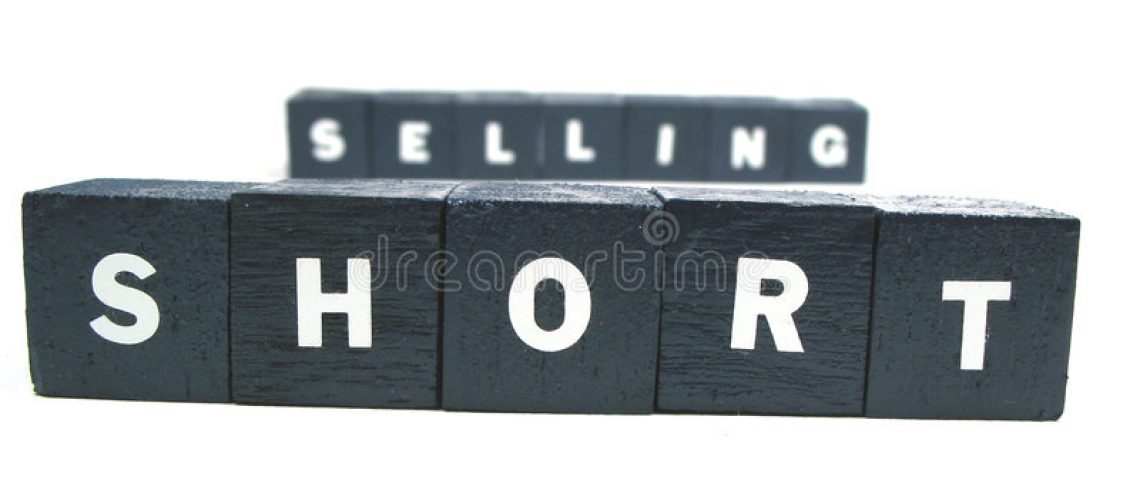What is short selling?
In a short sale, an investor borrows shares of a company’s stock that he/she then sells in the stock market. At some point, the investor must buy back the shares and return them to the lender. For example, an investor borrows 100 shares of Company ABC and sells them for $100/share or $10,000. The investor is betting that the stock price will be lower when he/she elects to return the 100 shares of Company ABC. Let’s say the stock drops to $40/share. At that point the investor buys 100 shares at $4,000 and returns them to the lender making a $6,000 profit ($10,000 – $4,000) less any trading fees.
On the other hand, if the stock price has increased when it’s time to return the shares, the investor will lose money. If shares of Company ABC are now $120/share, the investor must pay $12,000 for the shares he sold at $10,000 incurring a $2,000 ($10,000 – 12,000) loss. Since there is no cap on how much a stock can increase in value, the short seller’s loss can be substantial.
What is a short squeeze?
According to Investopedia, “ a short squeeze occurs when a stock or other asset jumps sharply higher, forcing traders who had bet that its price would fall, to buy it in order to forestall even greater losses. Their scramble to buy only adds to the upward pressure on the stock’s price.”
In January, a number of hedge funds were caught in such a squeeze. The funds shorted a number of stocks including the American video game retailer GameStop. Triggered by users of the subreddit r/wallstreetbets, an internet forum, investors started buying up shares in GameStop and other heavily shorted stocks forcing the price higher. For example, at the beginning of the month GameStop was selling at $17.25. At one point during the buying frenzy it sold for over $500/share.
In an attempt to cut their losses, the hedge funds sought to sell their borrowed shares. As more shares were bought, fewer shares remained. The continued demand for the remaining shares forced the price even higher, thus costing the funds dearly.
Is there a rule on how long a short sale can last?
There is no set rule on when the short seller must close out his or her position. However, to open a short position (that is, to borrow shares), an investor must have a margin account. A margin account is a brokerage account in which the broker lends the customer cash. As with any loan, the customer is charged interest on any borrowings. In addition, the Federal Reserve has set minimum values for the amount of cash that must be held in the account. This is called the maintenance margin. If the cash held falls below the minimum value, there is a margin call issued by the broker whereby the investor must provide additional capital and/or sell his or her position. Once again, although there generally is no required date by which the short seller must return the stock, the combination of interest expense and margin calls will force him/her to close out the position.
Is short selling risky?
Short selling can be very profitable, but it also carries a great deal of risk. Losses can mount quickly and indefinitely if instead of falling the stock price rises. One of the hedge funds involved in the GameStop short squeeze lost 53% on the trade.


